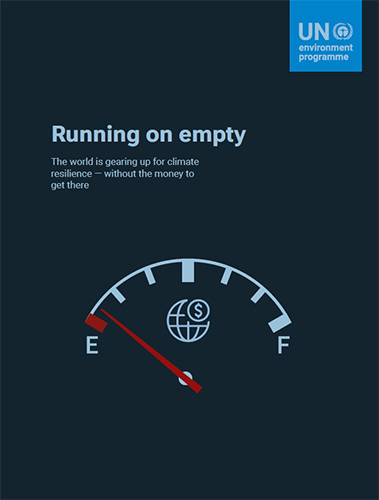Adaptation does not keep pace with increasing climate impacts

Distinguished Policy Fellow, Dr Timo Leiter has made a key contribution to the 2025 Adaptation Gap Report having been lead author for the implementation chapter since 2020. The latest report has found that while adaptation planning by national governments is widespread and implementation is increasing, adaptation action does not keep pace with increasing climate impacts.
The United Nations Environment Programme (UNEP’s) annual Adaptation Gap Report is assessing global progress in adaptation planning, finance and implementation. Among these three areas, national adaptation planning continues to see widespread uptake among 90% of all countries. However, the quality of planning is mixed, and some countries’ plans are outdated. Mainstreaming of adaptation into development planning is essential to ensure that climate risks are being addressed by all relevant government decisions.
The adaptation finance gap remains vast despite investments in climate action far outweighing the costs of inaction. The adaptation finance needs of developing countries by 2035 are at least 12 times as much as current international public adaptation finance flows. The Glasgow Climate Pact goal of doubling 2019 adaptation finance flows by 2025 to approximately US$40 billion will be missed if current trends continue. The Adaptation Gap Report estimates that the private sector could deliver approximately 15–20 per cent of total national adaptation funding needs (US$50 billion/per year until 2035).
Countries are reporting over 1,600 adaptation actions in their first transparency reports (BTRs) under the Paris Agreement. However, 75% of reported information is focused on climate hazards, priorities and intentions rather than reporting on implementation and its results. Most BTRs also lack consistency in linking actions to plans and to climate risks which makes it difficult to comprehensively assess adaptation progress. However, the widespread coverage of adaptation in the first round of BTRs is a promising start of countries’ adaptation reporting under the Paris Agreement and the Adaptation Gap Report provides recommendations for improvements in the second round of BTRs which are due by the end of 2026.
The Adaptation Gap Report 2025 directly informs the negotiations at COP30. It underscores that we cannot adapt our way out of the climate crisis – strong decarbonization is indispensable for keeping adaptation feasible. Breaching the temperature goal of the Paris Agreement – as the trajectory of current national climate pledges (NDCs) suggests – will cause huge economic damage and human suffering. Bold leadership is needed to keep climate action on track against the tide of climate denial and obstruction.
UNEP (2025). Adaptation Gap Report 2025: Running on empty. Nairobi, Kenya.

